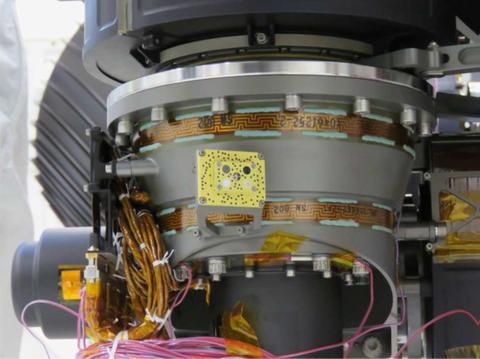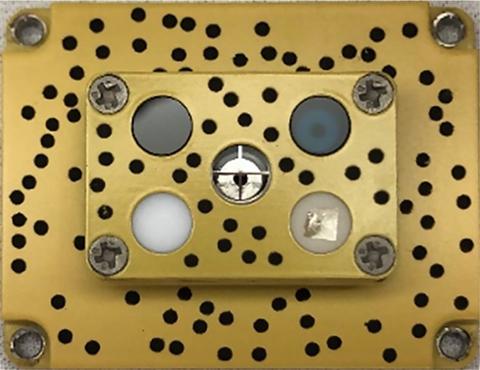

3, 2, 1 … blast off! One of NIST’s very own standard reference materials traveled through space and landed on the Red Planet in February as part of the National Aeronautics and Space Administration’s Mars 2020 mission.
The Perseverance rover — on a quest for signs of ancient life — is collecting rock and soil samples from Mars’ surface. Using an instrument called the Planetary Instrument for X-Ray Lithochemistry (PIXL for short), scientists can measure the elemental chemistry in those samples.
But they need a standard to verify the accuracy of the measurements taken, which is where NIST comes in.
SRM 610, a standard reference material for trace elements in glass, is made up of three cylindrical wafers cut from a glass rod that has been characterized for 61 different elements found in glass, like iron. The SRM belongs to a suite of four calibration standards that will be used to determine the concentrations of elements in the rocks and soil samples found in the sediment on Mars.
That’s one small step for Perseverance. One giant leap for accurate science.
Follow us on social media for more like this from all across NIST!

